Geopolitical landscape design: Central Asia and the European Union
“Our partnership is growing stronger,” say observers in Europe about the Central Asian “Five.” The first EU–Central Asia Summit in Samarkand marked a historic milestone on the path to mutual integration, elevating relations between the two regions to a strategic level. More details are provided by a Kazinform News Agency correspondent.

An important milestone
Today, Central Asia represents a unified and cohesive region. Its ability to collectively defend its political and economic interests shows that it is no longer an object, but a subject of global geopolitics. The Central Asian “Five” understand the key idea: it is unwise to rely on external forces to solve regional problems.
Interestingly, the European Union was the first to essentially recognize the region as a global player. In May 2007, the EU adopted its first Strategy for Central Asia. Amid rapidly changing global dynamics, this partnership has only grown stronger and broader.
The first EU–Central Asia summit, held in Uzbekistan, will go down in history as a significant milestone in regional relations, paving the way for deeper cooperation at a strategic level.
The mutual interest shown speaks volumes about the level of dialogue. From the EU, participants included President of the European Council António Costa and President of the European Commission Ursula von der Leyen. From Central Asia: Presidents Kassym-Jomart Tokayev of Kazakhstan, Sadyr Japarov of Kyrgyzstan, Emomali Rahmon of Tajikistan, Serdar Berdimuhamedow of Turkmenistan, and summit chair President Shavkat Mirziyoyev of Uzbekistan.
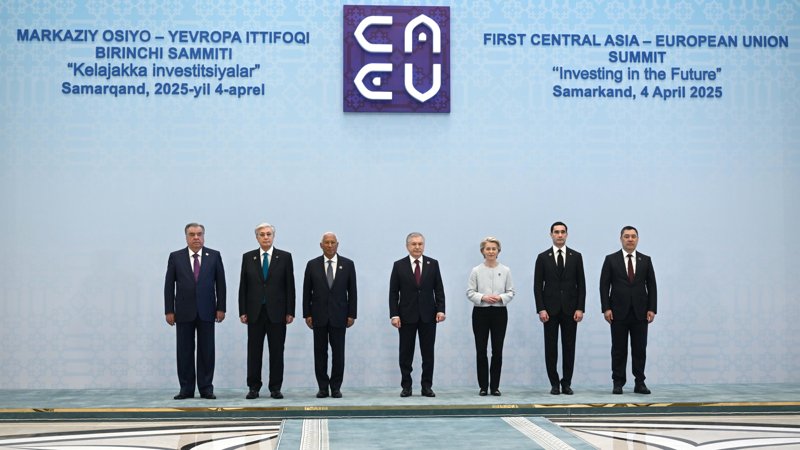
The summit theme, “Investing in the Future” speaks for itself. Not only political leaders from the EU and Central Asia participated, but also the heads of major financial institutions like the European Bank for Reconstruction and Development (EBRD) and the European Investment Bank. Discussions of current issues took place both during and on the sidelines of the summit, including within various dialogue platforms.
Key areas of cooperation included political dialogue and security, transport development and digital connectivity, critical raw materials, green energy, innovation, agriculture, joint business initiatives, and more.
Overcoming fragmentation
The summit coincided with troubling news about global fragmentation. The U.S. introduction of tariffs on imports from 185 countries drew wide attention. Experts suggest that such trade confrontations will negatively affect the global economy, further encouraging already close ties between Central Asia and Europe.
Consider this: over the past seven years, trade between Central Asia and the EU has quadrupled. Notably, this has been largely driven by Kazakhstan, which accounts for 80% of the region’s trade with the EU. Last year, trade between Kazakhstan and EU member states reached around $50 billion.
Speaking at the summit, President Tokayev emphasized that, amid rapid geopolitical shifts and global challenges, expanding interregional partnerships is particularly timely and strategically important. His main focus: strengthening trade and economic ties.
“Kazakhstan remains a reliable supplier of hydrocarbons to Europe. Our country accounts for about 13% of the EU’s total oil imports, most of which is delivered via the Caspian Pipeline Consortium (CPC),” noted Tokayev.
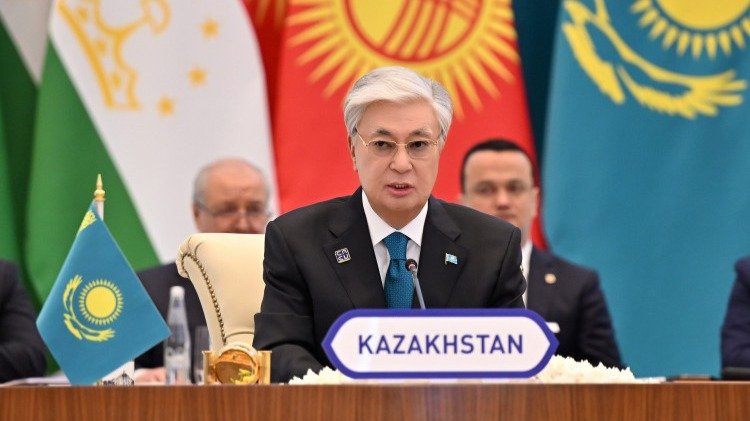
However, times are changing, and diversification is needed — not just in delivery routes for hydrocarbons, but also with regard to the green agenda. On one hand, the region is creating favorable conditions for the development of renewable energy and hydrogen industries; on the other, it's developing channels for the transport of clean energy.
A separate issue is critical raw materials. The EU has already signed memoranda of cooperation with Kazakhstan and Uzbekistan for joint extraction of rare earth elements. Under an agreement with the EBRD, joint geological exploration projects are underway, and advanced, sustainable practices are being introduced in the mining sector.
President Tokayev proposed the next step: the creation of a Regional Research Center for Rare Earth Metals in Astana. This center would become a vital source of up-to-date information for enterprises and investors about available deposits, technologies, and development opportunities.
Of course, the EU works on critical materials with other regions like Africa and Southeast Asia, but Kazakhstan has distinct advantages. Political analyst Alibek Tazhibaev highlighted a key factor — stability.
“With internal regional agendas stabilized and strong, pragmatic, and competent leadership in place, Central Asia offers a much more reliable investment environment than, say, Africa,” emphasized Tazhibaev.
In terms of critical goods, Kazakhstan produces 19 of the 34 raw materials deemed essential for the EU economy, including uranium, titanium, copper, lithium, cobalt, and tungsten. The country supplies about 40% of the world's nuclear fuel — a fact President Tokayev underlined.
Overall, Kazakhstan is keen to expand and diversify its range of exports to Europe. At the summit, Tokayev mentioned the possibility of boosting exports to the EU by over $2 billion across 175 product categories.
Expanding connectivity
Another key aspect of cooperation is transportation connectivity between Central Asia and Europe. In this context, discussions focused on the potential of the Trans-Caspian International Transport Route (TITR).
President Tokayev shared some data: last year, container traffic on this route increased by 62%, reaching 4.5 million tons. By 2027, the goal is to raise the cargo flow to 10 million tons.
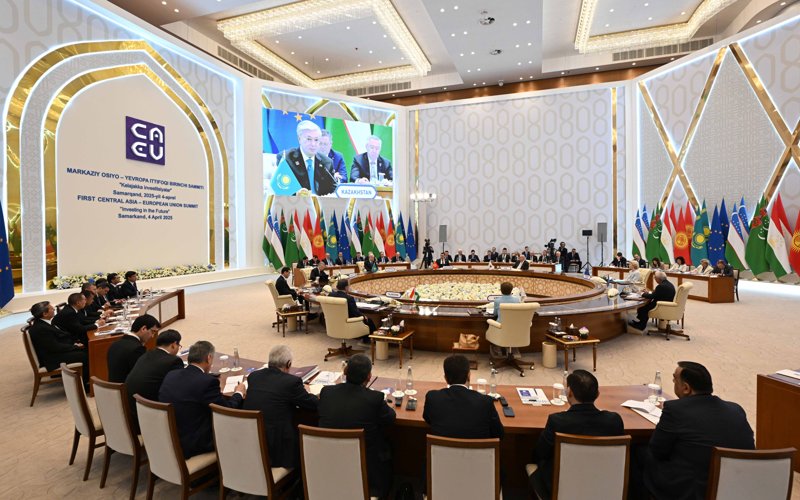
It's worth noting that research by the EBRD, supported by the European Commission, shows significant potential for the TITR. Several development scenarios exist — all of them positive. Under a “business as usual” scenario, container traffic is projected to grow from 18,000 TEU (twenty-foot equivalent units) in 2022 to 130,000 TEU by 2040. An “unrestricted” scenario could boost that figure to 865,000 TEU.
However, to achieve greater efficiency, the development of multimodal logistics hubs, removal of non-tariff barriers, implementation of cargo digitalization, and improvement of border-crossing practices are essential.
Which scenario comes to fruition depends on coordinated policy among the countries along the route — something Tokayev emphasized. Kazakhstan and China are working together to align the Trans-Caspian route with China’s Belt and Road Initiative. Brussels is also stepping up, channeling investment through its Global Gateway initiative.
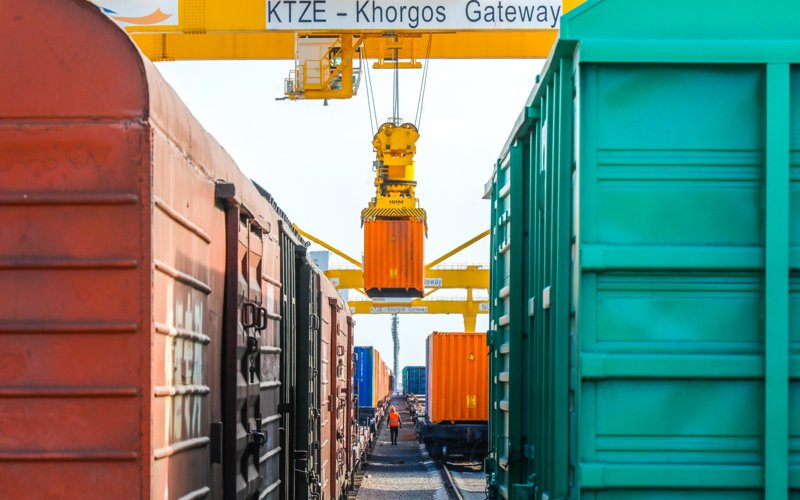
Political analyst Alibek Tazhibaev emphasized the need for a business-oriented approach under the Global Gateway strategy:
“We need long-term infrastructure contracts that can more tightly link Central Asia with major trans-European transport routes. The Middle Corridor (TITR) is developing actively, and Kazakhstan is the key driver. We’ve shown that we can handle this role; we’re investing, increasing cargo flows, and inviting our partners to join. But for this route to reach the level of the CPC, we must work hard. There should be no ‘bottlenecks’ in our development,” he said, also noting the importance of other land and sea alternatives to create diversified logistics networks.
Human capital and security
Today, it’s impossible to win the technological race without creative and skilled talent. At the summit, the President of Kazakhstan presented several ongoing and planned initiatives in the fields of science and education. For instance, Kazakhstan plans to open more than thirty branches of foreign universities. There is also an ongoing program to train 100,000 IT specialists. A high-tech center called Alem.AI is being established in Astana to support the implementation of innovations in this field.

“We have also launched a venture fund to accelerate the development of artificial intelligence. Through the Team Europe initiative, the European Union is supporting Central Asian countries in enhancing cooperation in digital technologies. Kazakhstan is open to collaboration and knowledge exchange. In this regard, I propose launching a Central Asia – European Union Innovation Campus based at Astana Hub,” said Kassym-Jomart Tokayev.
The second crucial foundation for economic prosperity is international security and stability. In this context, the President of Kazakhstan emphasized the irreplaceable role of the United Nations and voiced support for the negotiation process concerning Ukraine.
“Kazakhstan consistently supports the peaceful resolution of conflicts. We therefore welcome the start of negotiations on Ukraine and hope for a positive outcome, while fully understanding the complexity of the issue,” said the President.
The issue of Afghanistan, which is no longer viewed in isolation from Central Asia, also received attention.
Climate agenda
As part of his working program, the President of Kazakhstan participated in the international conference “Central Asia Facing Global Climate Threats.”
According to Kassym-Jomart Tokayev, the region is experiencing serious environmental challenges: temperatures in Central Asia are rising twice as fast as the global average. Glaciers are melting, desertification is accelerating, and water scarcity is intensifying. A balance between economic growth and climate action is urgently needed, along with interstate coordination.
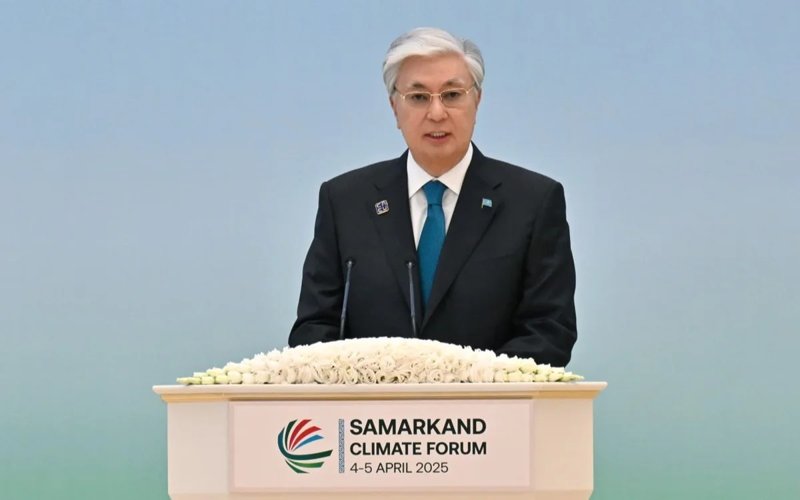
“Water is a growing issue in our region for at least two reasons. Over the past twenty years, per capita water availability has dropped by 30%. Meanwhile, 70% of regional water resources are transboundary. That’s why we need international support in developing water-saving technologies, smart irrigation systems, and hydrological monitoring. We are also promoting a long-standing idea: the creation of a Central Asian Water and Energy Partnership,” emphasized Tokayev.
It should be noted that the issues of economic development and environmental preservation, raised in the two summit platforms in Samarkand, are deeply interconnected. After all, uranium and rare earth elements are essential components of the green transition. Likewise, sustainable agriculture in a water-scarce environment is impossible without resource-efficient technologies.
In this context, European business communities are actively responding to the region’s needs. According to political analyst Alibek Tazhibaev, EU business entities are already significantly contributing to Central Asia's development.
“However, they rarely operate under the EU flag. The institutionalized European Union mainly supports social entrepreneurship, offering grants related to ecology, education, and similar areas. It's important to clearly distinguish the EU as an institution from individual country-led initiatives,” the expert noted.
It's worth reiterating that Europe is interested in Central Asia not only because of its strategic geographic location, market of over 80 million people, and vast resource potential, but also — as has already been mentioned — stability. Even Afghanistan is showing some signs of stabilization, having reduced opium cultivation by 95% following the Taliban’s rise to power.
There is growing global recognition that Central Asia is becoming more harmonious in the geopolitical spectrum, and its political weight is increasing. Today, EU–Central Asia relations can be seen as a form of landscape design amid geopolitical fault lines: building bridges, softening environmental impacts, and shaping a space free of conflict.
This is, in essence, the key to the region’s appeal. The outcomes of the Samarkand meeting speak for themselves: Brussels announced a new investment package for Central Asia under its Global Gateway initiative worth €12 billion:
-€3 billion for transport projects;
-€2.5 billion for critical raw materials;
-€6.4 billion for water resources, energy, and climate;
-The remaining funds for digital connectivity.
Europe has sent a clear signal - when global barriers rise, investments seek new directions.
Earlier, it was reported that the first Central Asia – European Union Summit has kicked off in Samarkand.

